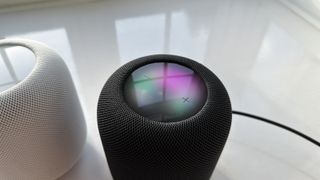Sonos might be the king of multi-room systems, but it's not the only game in town. While its speakers are very good, they can be beaten on design, sound quality and versatility. Its speakers aren't often discounted either, whereas rivals can have hundreds knocked off their prices in the sales.
We've rounded up the best Sonos alternatives here, so you can see what else is available. Each is a quality device – one has even won an Award – that can sync with other partner devices in the same ecosystem. That means you can quickly build up a whole-home multi-room system without mentioning the Sonos name once.
All of the below have been thoroughly tested by our expert reviews team. With over 100 years of experience between us, we know our audio onions, whether it's 'proper' hi-fi, wireless multi-room, home cinema or headphones. What Hi-Fi? has been reviewing products for nearly 50 years, and we've always been honest, thorough and straightforward, without fear or favour. For more information on why you can trust us, check out our how we test section further down this page.

The first time I used Sonos it felt like a real step into the future. Hearing the same music through speakers in different rooms, and all controlled from the nifty – though chunky – Controller made me think the company was onto something. Sonos has evolved since that first demo 20-odd years ago, and while its range now includes all manner of speakers, the competition has caught up. Rival multi-room speakers can be cheaper, better-sounding and more stylish. Check these out.
The quick list
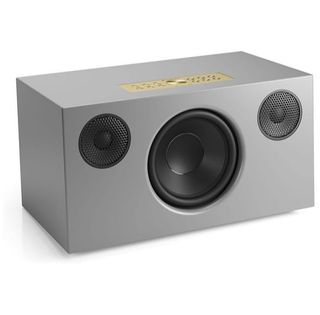
Best overall
In terms of price, performance and choice of components, Audio Pro is the best Sonos alternative for most people.
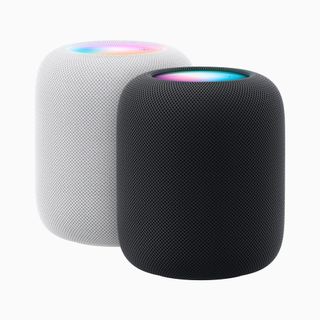
Best for iOS
Impeccable build quality, fantastic user-friendliness and a full, rich sound makes the HomePod 2 a no-brainer for those of an iOS bent.

Best for versatility
Both Denon and Marantz kit work with the HEOS platform, giving you a great selection of top devices from which to choose.
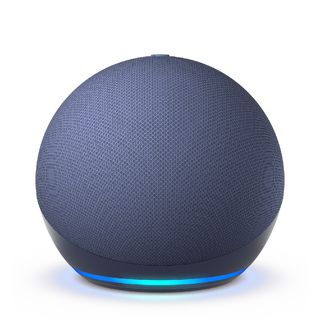
Best for value
Amazon's Echo Dot is one of the most wallet-friendly smart speakers around, and possibly the cheapest way to bring multi-room to your home.
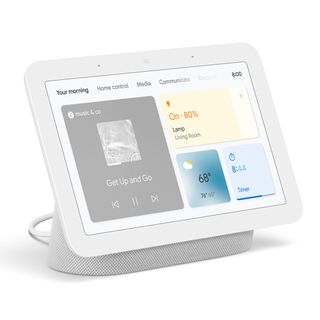
Best with a screen
A 7-inch screen makes this Sonos rival the hub of your smart home, with multi-room skills just a tap of the touchscreen away.
The best Sonos alternatives we recommend in 2024
Why you can trust What Hi-Fi?
Best overall
Audio Pro has made its mark on the multi-room market in a short space of time. We're big fans of the Swedish company's wireless speakers, which look and sound superb, and together they make an excellent Sonos alternative.
The Audio Pro Addon C3, Addon C5A and Addon C10 MkII all deliver excellent audio performance for the money. (In fact, the C3 and C10 MkII are past What Hi-Fi? Award winners.) They're entertaining, musical performers and superior to a lot of rivals at similar money. Crucially, they also offer Bluetooth and line-in inputs on many of their models, giving even more flexibility.
The latest entry into the range – the C20 – is another five-star performer, with the brand's trademark big and detailed sound, excellent connectivity and solid build quality.
The Audio Pro range doesn’t include the same home cinema components as some of its multi-room rivals, and the app is simple rather than full of features. But for sound quality at the price, this system is currently unbeatable.
Read the full Audio Pro multi-room system review
Best for iOS
The HomePod 2 is the pricier option in Apple’s current lineup, sitting well above the HomePod Mini. It succeeds the first generation HomePod we tested all the way back in 2018, and while it may look similar, it contains some big changes.
Sonically, it's a leap forward. Our tests revealed it to be one of the best sounding smart speakers you’ll find, blowing its closest rival, the Amazon Echo Studio, out of the water and offering a much more precise low end than the first generation HomePod.
The audio is precise and doesn't succumb to sibilance like a lot of speakers at this price. It has bags of energy too, playing tunes with infectious enthusiasm.
Classically Apple, it's a cinch to set up. When it's paired with an iPhone all you have to do is scan for the speaker and run through a few on-screen commands to get it fully integrated with your smart home setup. It even adjusts its sound in real time to adapt to its surroundings.
But its biggest strength is also its greatest weakness: it's an Apple product, for Apple people. If you're not in Apple's ecosystem, you won't get anywhere near the best out of the HomePod 2. Its primary connection is locked to Apple’s AirPlay 2 tech, Apple Music is the only music streaming service natively supported and Siri is your only option for voice commands (annoying, seeing as Tidal and BBC radio still don’t work with Siri). This will limit its appeal to those who aren’t Apple diehards. They might prefer more platform-agnostic options like Sonos, or another alternative from this list.
Read the full Apple HomePod 2 review
Best for versatility
Denon might be better known for its AV receivers, but it also offers soundbars, subwoofers, amplifiers and wireless speakers. What's more, all of that kit (plus offerings from sister brand Marantz) can be connected up through Denon's HEOS platform.
Since launching, HEOS has been upgraded with support for high-res audio and additional support for streaming services such as Amazon Music. You also get more Alexa skills, allowing you to control playback with vocal commands.
Sound is smooth, spacious and replete with insight. And while Audio Pro's offering just edges it on sound quality, the HEOS makes a superb all-rounder – and it offers a wider choice of pick 'n' mix components. Recent additions like the Denon Home 150 NV (a streamlined version of the 150 which could rival the Sonos Era 100) and Marantz M1 compact streaming amp make it all the more compelling.
Read the full Denon HEOS multi-room system review
Best for value
The fifth incarnation of the Amazon Echo Dot doesn’t exactly break from its predecessor in the looks department, retaining that round shape and understated aesthetic that served the 4th Generation so well. It's lost the 3.5mm audio output, but can still be connected to another speaker via Bluetooth.
Like other Echo speakers, it prioritises Amazon's services, but isn't limited to them: Spotify, Deezer and Apple Music are supported alongside Amazon Music, though sadly there's no Tidal.
Amazon promises clearer vocals, deeper bass and vibrant sound in any room thanks to a single 44mm front-firing speaker, larger than the previous gen’s 40mm. It sounds very impressive indeed, especially given its diminutive dimensions and price. The bass carries some weight, but isn't as clear as with pricier speakers. And crank the volume up and distortion starts to creep in.
Nevertheless, this is another stunning entry to the Echo speaker range.
Read the full Amazon Echo Dot (5th Generation) review
Best with a screen
To put the Google Nest Hub’s 7in (1024 x 600) touchscreen into context, the display real estate is only slightly smaller than the iPhone 15 Pro Max's when measured on the diagonal – and here, there's no camera for selfies, video calls or security duties.
But there are plenty of music streaming and TV services available, including All 4, Deezer, Netflix and Disney Plus – and remember, Amazon's smart products don't currently have 'skill' support for Disney Plus. The headline-grabber, however, is Sleep Sensing (which costs extra). As the Nest Hub includes Google’s Soli sensor for motion detection, plus light and temperature sensors, not only can you stop and resume tracks by simply showing your Hub the palm of your hand, the chip housed within the speaker can tell you how long you slept for and how restful your sleep was. It's something different and trying to align your 'sleep circles' with a good eight hours is quite addictive.
Amazon's Echo Show 10 – a similar smart-speaker-with-screen concept – is almost three times the price and is bigger, beefier, and comes with a snapper. But thanks to Disney Plus, Sleep Sensing tech and a good (if not great) sound, the Google Nest Hub is a great Sonos alternative that's a realistic proposition for most rooms in the home.
Read the full Google Nest Hub (2nd Generation) review
Also consider
The best (other) Sonos alternatives we've tested:
Bluesound Generation 2i: we're only hesitant to recommend this past Award winner because we haven't tested it in so long, and so its sound quality might not stand up to today's rivals. But at the time, it impressed massively, though sound quality does vary across the range.
Apple HomePod Mini: if you don't want to shell out for the full HomePod 2 experience, the HomePod Mini is a great budget option. It delivers surprisingly full sound in a much smaller and cheaper package, while offering a full suite of features.
Amazon Echo (4th Gen): bigger than the Echo Dot, the standard Echo gives you the same experience with improved sound. And it's often discounted, so keep a look out come sales time.
How to choose the best Sonos alternative for you
Before you dive right in and spend a fortune on a Sonos alternative, wait. The beauty of a multi-room system like the ones above is that you don't have to buy it all in one go, you can start with just one or two speakers and expand it on a device-by-device basis, going room to room. This will help you spread the cost over months – or even years – and take a more considered approach to which rooms really need adding to your multi-room set-up. And if you find actually you would be better served by another brand's ecosystem, you won't have to replace your whole house system.
App control is now pretty standard, but some apps are better than others, so it might be worth looking into how each works to find which is simplest for you. Most systems also work with voice assistants like Siri, Google Assistant and Amazon's Alexa. Deep into Apple's/Google's/Amazon's ecosystem? Make sure your Sonos alternative is compatible with your smart assistant of choice, or switch allegiance.
It's also worth investigating which streaming service(s) your speaker of choice supports. The big ones are pretty ubiquitous nowadays, but it's always worth checking – do your homework before you buy to avoid disappointment. You should also look at what physical connections each speaker offers – the HomePod range offers none at all bar a port for the power cable, while Audio Pro and Denon's models have optical, RCA and an Ethernet port for a more robust internet connection. If you plan on connecting other devices to your Sonos alternatives, you'll need to know whether they're compatible.
Then there's the matter of price. Most of the devices in this list are cheaper than their Sonos counterparts, and, with the exception of Apple, more likely to be discounted in the sales. Choose wisely, and you won't miss Sonos at all.
How we test Sonos alternatives
At What Hi-Fi? we comprehensively test and review every product we recommend, from soundbars to speakers, headphones and TVs. And it's no different for Sonos alternatives.
As a rule, we do comparative testing – ensuring new products are tested against their rivals according to product type, features and price. Almost all the testing is carried out by our team of expert reviewers at our dedicated test rooms, though we have been known for take Sonos alternatives home to really get the full 'living with' experience (sadly we have to give them back afterwards).
We test every aspect of a multi-room speaker system, including sound quality, features, ease of set-up and use, and overall performance. And we test multiple products in each family, so we're not judging a whole range from one device (sound quality can really vary within the same range – some speakers score a five while others may only be a three).
As with all products we test, review verdicts are decided by the team rather than one reviewer in order to avoid possible bias. There's no input from PR companies or our sales team when it comes to the verdict. In the nearly 50 years since we started reviewing, our aim remains the same – to give honest, unbiased advice so you can buy the best products possible.
- Get the cheapest price: best Sonos deals
- Save with our best wireless speaker deals
- Best multi-room speakers
- Which Sonos speaker is best for you?
F.A.Q.
What is a good alternative to Sonos?
Sonos is the best known of all the multi-room systems, but there are plenty of alternatives. Big names like Apple, Amazon, Google and Bose offer speakers that can work together wirelessly as a multi-room system, as do less mainstream brands like Audio Pro and Bluesound.
Our best Sonos alternatives are ranked in order of preference, so we think the Audio Pro devices are the best alternatives around. But depending on your needs, you'll find any of the systems on this page a treat.
Why is Sonos so popular?
It's a combination of factors. Sonos has been in the game for a long time, so it's built up a reputation. Its ecosystem is one of the most comprehensive out there, with all the main streaming apps and services covered, and an 'everything just works' approach.
Over the years it's also built up a portfolio of products that covers every need, from portable speakers (Sonos Roam), to soundbars (Sonos Ray), and everything in between. So whatever kind of system you're building, there's a Sonos speaker (or three) for every room in the home.
Of course, it helps that Sonos' app is first class, as is its sound quality.
Is Bose or Sonos better?
Both Bose and Sonos offer speakers and soundbars that can talk to each other wirelessly to create a multi-room system. Our tests have shown Sonos' devices have come out on top overall, thanks to the reasons listed above. But Bose does make some excellent speakers, while its noise-cancelling headphones are some of the best in the business.
Sonos is rumoured to be working on a pair of wireless headphones, so who knows, there might be less to separate these two brands in future...
Recent updates
- 4th July 2024: Rewrote intro. Removed test scores tables. Updated Audio Pro entry with mention of C20; updated Denon HEOS entry with mention of Marantz M1 and Denon Home 150 NV. Expanded 'How to Choose' section.
- 16th May 2024: Converted to new Best Buy format. Removed Bluesound Generation 2i, Apple HomePod Mini and Amazon Echo (4th Generation) from main list. Added 'Also consider' and 'Recent updates' sections.
- 12th January 2024: Added new introduction and mentions of Award-winning products where relevant.
- 5th June 2023: Added Amazon Echo Dot (5th Generation).
